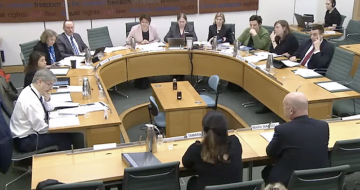Deal would be a legal market game-changer — if it happens

Allen & Overy is in merger talks with Los Angeles-based counterpart O’Melveny & Myers, it has been reported.
The potential tie-up — discussions about which have been brought to light by Legal Week (£) — would create a transatlantic giant with 3,000 lawyers and combined revenues of £2bn ($2.8bn), making it one of the world’s biggest law firms.
A deal of this nature could have huge implications for the global legal market. Magic circle firms have traditionally not shown much enthusiasm for the idea of joining forces with a leading US rival, opting instead to enter the American market by poaching teams or taking over much smaller firms. So a merger between two major players would represent a step change, even if A&O’s turnover is nearly three times that of O’Melveny & Myers.
It’s hard to know how far along this is. In its piece, Legal Week quotes an unnamed former O’Melveny partner as saying that their old firm is “deep” in discussions with A&O, and reports that “firm leaders have travelled to meet one another and they have discussed titles of the combined firm”.
This has prompted US legal blog Above the Law to suggest ‘Allen & O’Melvery’ as a potential name for the new megafirm.
But on Saturday O’Melveny & Myers issued this statement:
“We have no plans to merge and never have.”
While at face value it seems to scotch the tie-up, it falls short of a denial that discussions have taken place.
A&O, meanwhile, struck a markedly different note with its statement:
“While we have said for several years that we are open to considering a merger with the right partner in the US, we talk to many law firms in many countries all of the time and we do not comment on market speculation and rumours regarding any particular firm.”
Whether ‘Allen & O’Melvery’ happens or not, the willingness of A&O to seemingly take steps to bring about a transatlantic merger is significant in itself. An age of magic circle tie-ups with big US firms could be about to begin. Indeed, with the creation of Bryan Cave Leighton Paisner last month (a combination of London’s Berwin Leighton Paisner and America’s Bryan Cave), perhaps something bigger is already underway.
Adding credence to this theory are the recent unspectacular financial results of magic circle and other large UK firms. In fairness to A&O, it was something of the exception to this rule last year as it lifted profit per equity partner by 26%; still, industry number crunchers agreed that all five members of the elite quintet were aided considerably by the weak pound — which magnified the effect of overseas office earnings for this highly international collection of firms.
With the pound strengthening, the magic circle will lack this boost in the years ahead, potentially leading to increasing questions about a collective business model of high quality work delivered by large teams. Already there are doubts about its continuing viability in an age of increasing automation of low-ish level legal tasks — a concern that A&O has not been slow to respond to through, for example, its new ‘Fuse’ lawtech start-up hub, and recently-announced plans to start hiring science and economics graduates for newly-created project management roles.
A transatlantic magic circle megafirm would have lots of interesting market repercussions — not least for junior lawyer pay. Would a firm of this nature elevate London newly qualified (NQ) salaries to the US levels of $180,000 (which currently equates to £128,000). Or would it stick with the City of London rate of £81,000 that A&O currently pays to NQs?


